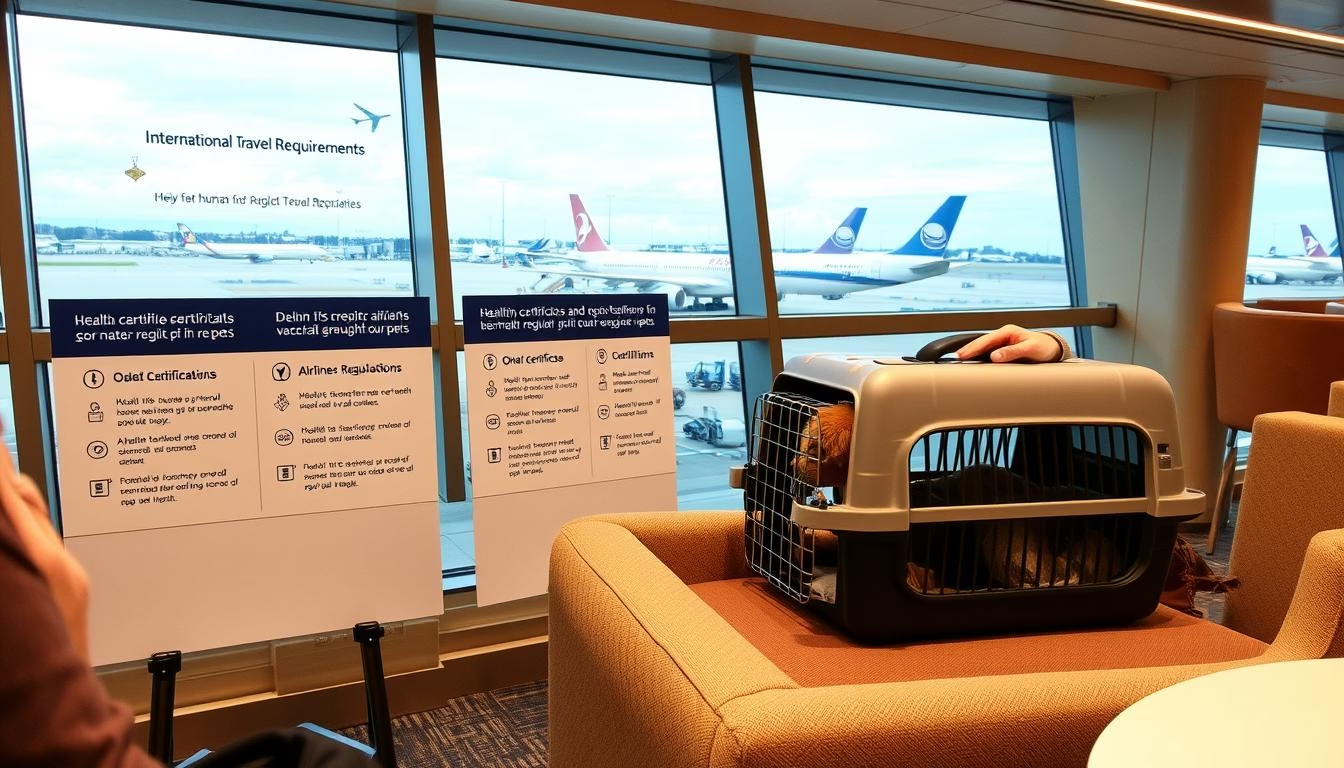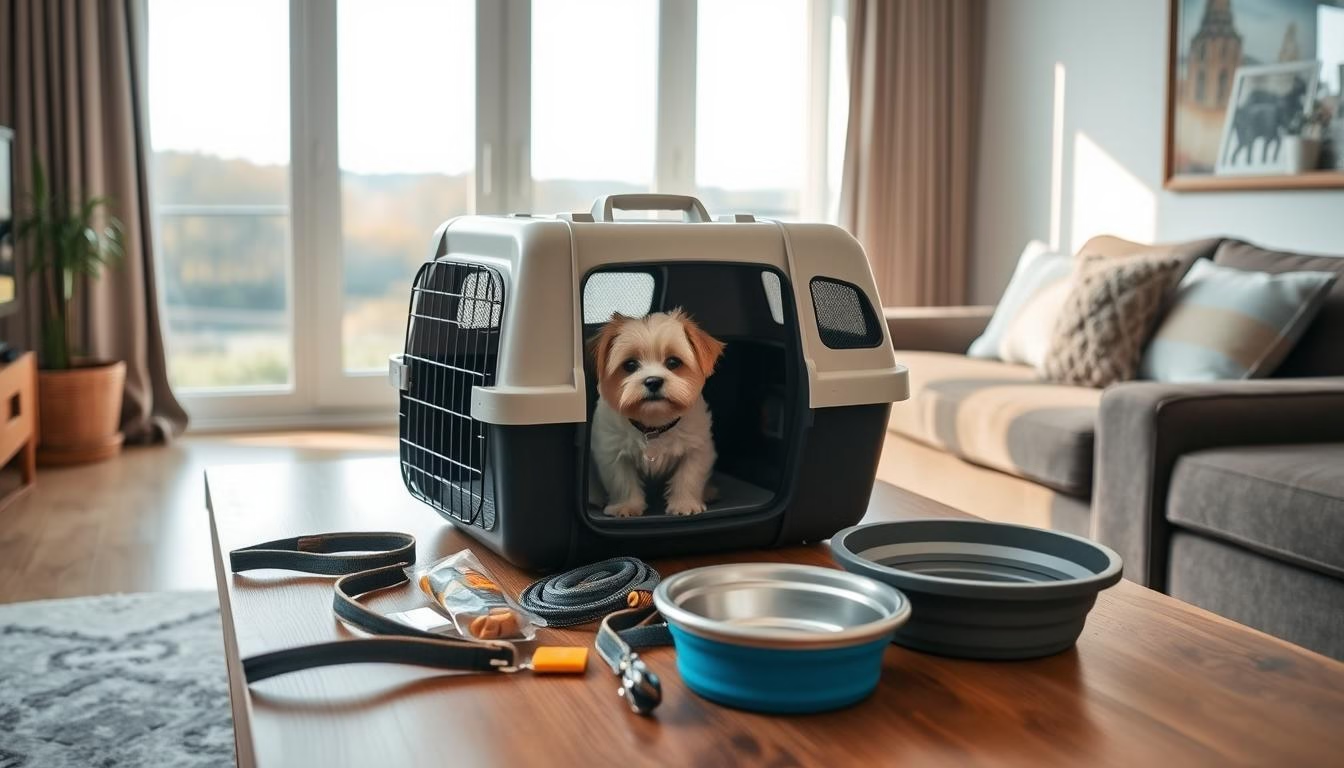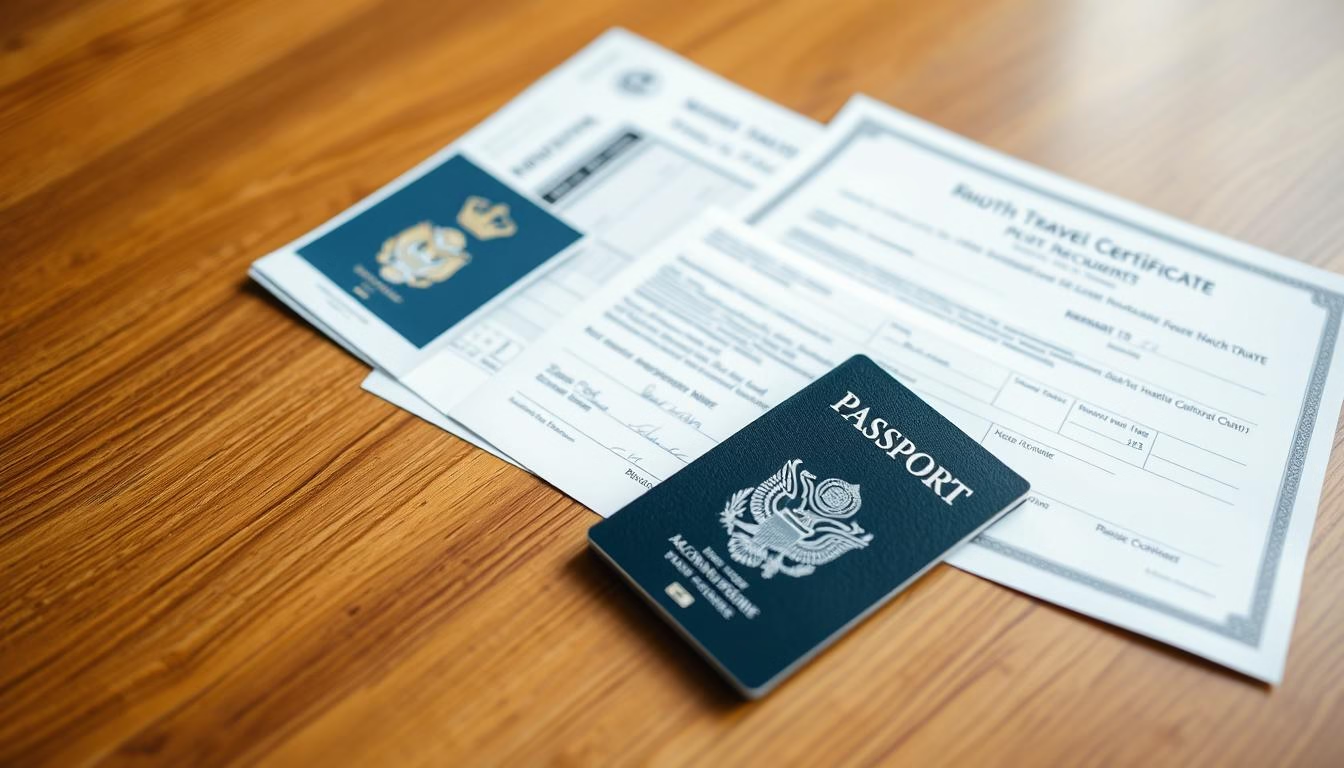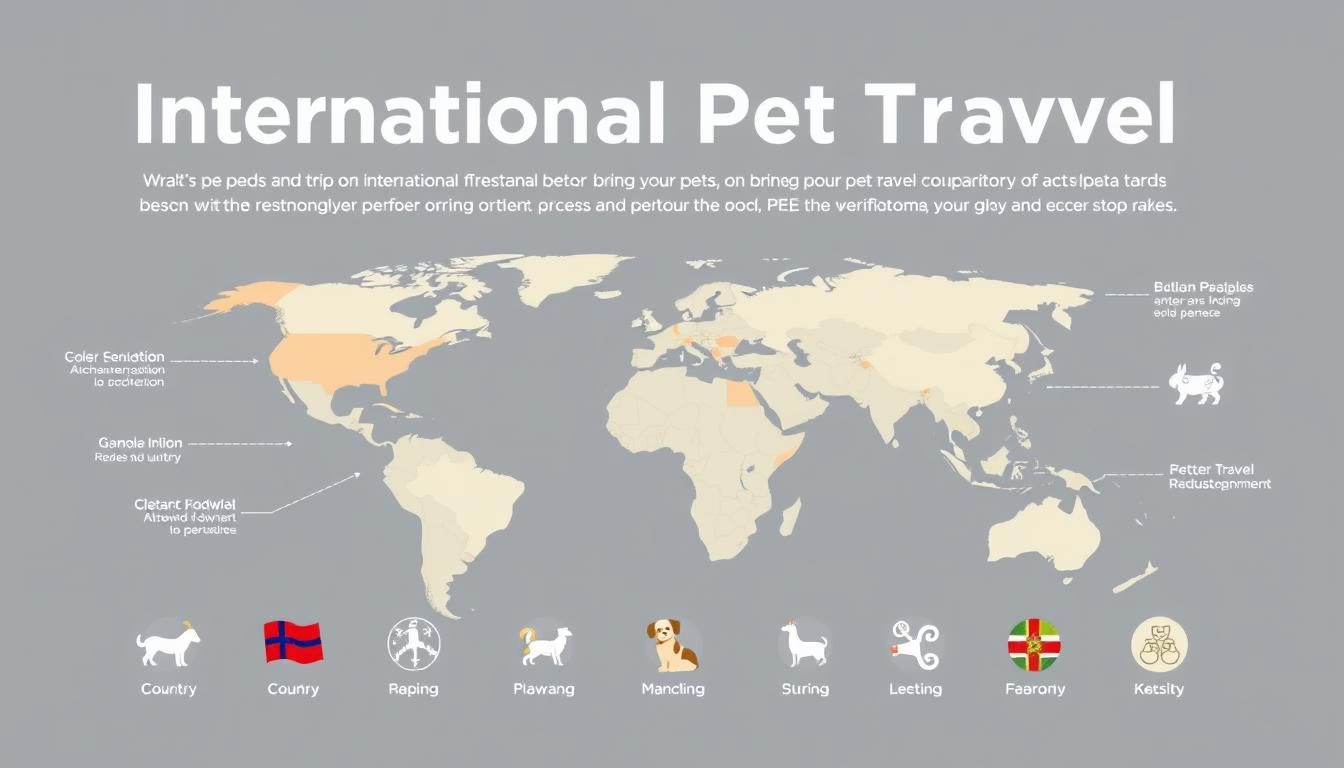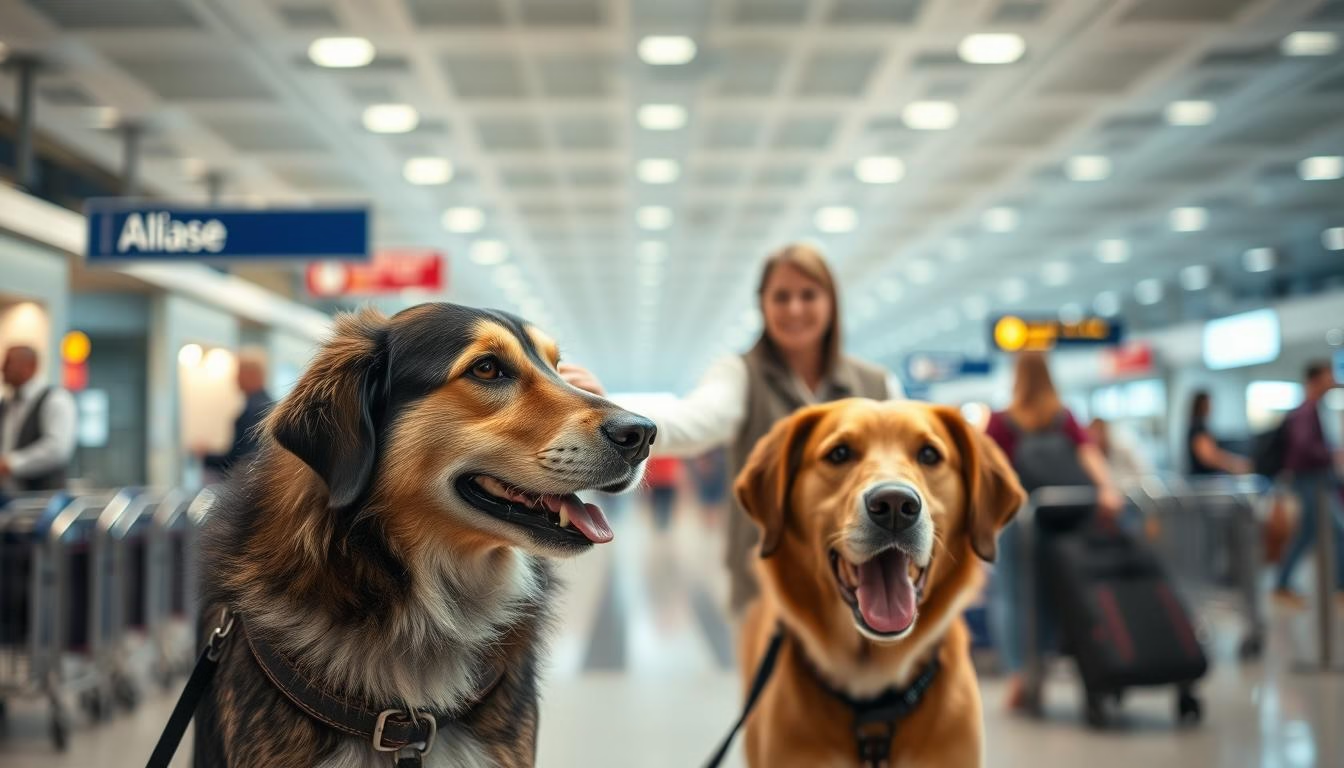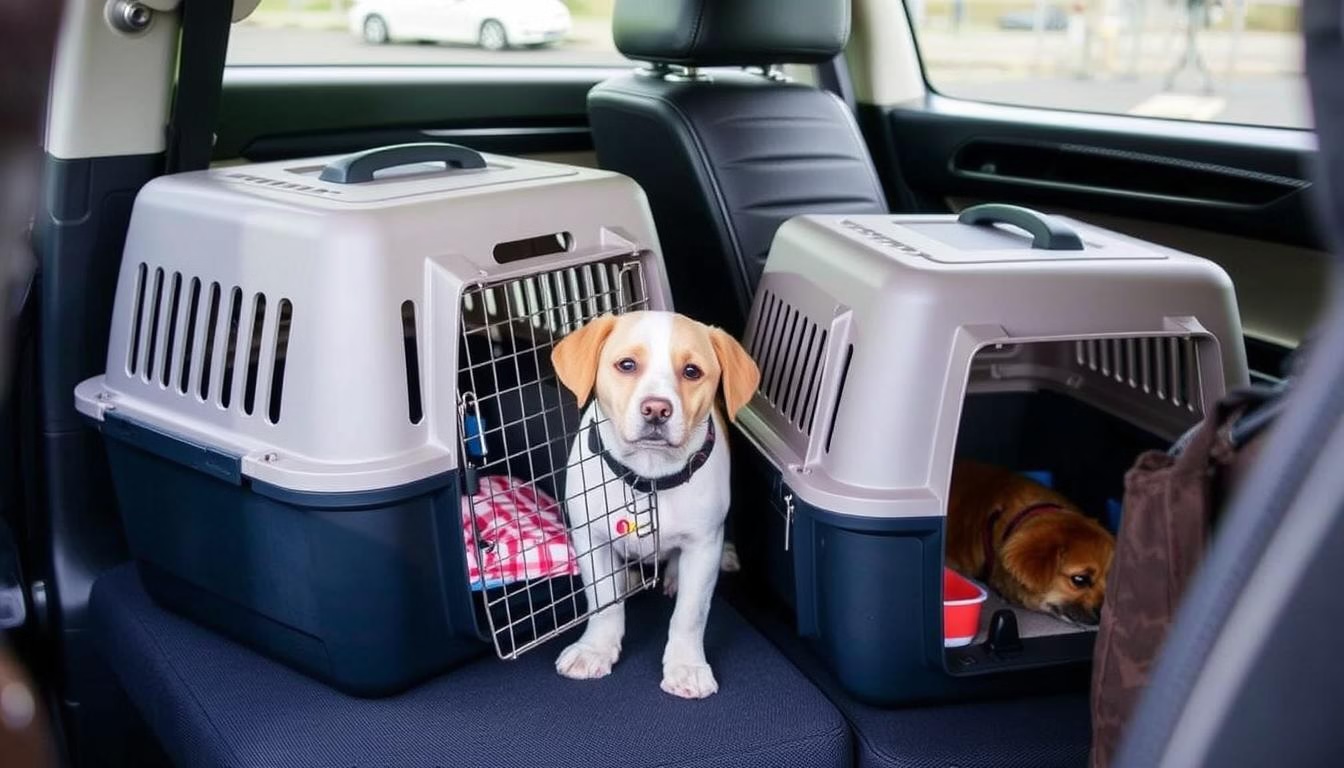Are you planning to take your furry friend on a global adventure? International Travel with Pets can be a daunting task, especially when it comes to navigating complex airline policies and country-specific regulations.
Before booking your pet’s ticket, it’s essential to understand the requirements for pet travel, including vaccinations, microchipping, and documentation. Different airlines have varying policies, and some countries enforce strict quarantine periods, making it crucial to plan.
With so many factors to consider, it’s no wonder that many pet owners feel overwhelmed. This comprehensive guide will walk you through everything you need to know about pet travel, from initial planning to arrival at your destination.
Planning Your Pet’s International Journey
To travel abroad with your pet, it’s crucial to start preparing well in advance. International pet travel involves a series of steps that ensure your health and safety during the journey.
Start Early: Timeline for Pet Travel Preparation
Leave yourself plenty of time before the trip to take care of your pet’s required medical care and paperwork. International pet travel requires a timeline of preparation that typically begins 4-6 months before your departure date, especially for destinations with strict entry requirements.
Consulting with Your Veterinarian
Your first step should be consulting with your veterinarian about your travel plans. They can help determine if your pet is healthy enough for international travel and outline necessary medical procedures. Many countries require rabies vaccinations to be administered at specific intervals before travel.
Researching Your Destination’s Requirements
Research your destination country’s specific requirements by visiting their embassy website or contacting their consulate. Create a detailed checklist and timeline working backward from your departure date to ensure all vaccinations, tests, and paperwork are completed within the required timeframes. For some destinations, preparation may need to begin 6-8 months in advance.
Essential Documentation for International Travel with Pets
To travel abroad with your pet, you’ll need to gather essential documents that meet the destination country’s requirements. The specific paperwork needed can vary significantly from one country to another, making it crucial to research the requirements for your destination well in advance.
Health Certificates and Vaccination Records
Health certificates are a fundamental requirement for international pet travel. Typically, a USDA-accredited veterinarian must complete these certificates within a specific timeframe before travel, often 10 days or less. Most countries require an International Health Certificate (USDA-APHIS Form 7001), which must be endorsed by your state’s USDA office. Vaccination records, particularly for rabies, are also critical and must include details such as the vaccination date, product name, lot number, and expiration date.
Microchipping Requirements
Microchipping is mandatory for pet travel to most countries, with many requiring ISO-standard microchips (11784/11785). The microchip must be implanted before rabies vaccinations are administered, as this affects the validity of the vaccinations.
USDA Endorsements and Authentication
For many countries, additional authentication of your pet’s documents through the Department of State’s Office of Authentications is required. This process can be lengthy, taking up to 2-3 months during busy periods.
- Health certificates and vaccination records are essential for international pet travel.
- Microchipping is a critical step in preparing your pet for international travel.
- Understanding USDA endorsements and authentication processes is vital for compliance.
Keeping multiple copies of all documentation is advisable, as these will be needed at various checkpoints during your journey and potentially upon return to the United States.
Understanding Airline Pet Policies
To ensure a smooth journey for your pet, it’s vital to familiarize yourself with airline pet policies. Airline policies for pet travel vary significantly between carriers, with some allowing small pets in the cabin, others restricting pets to cargo, and some not accepting pets at all on certain routes or aircraft types.
In-Cabin Travel Options
For in-cabin travel, pets must typically weigh less than 20 pounds, including their carrier, which must fit under the seat in front of you. Airlines limit the number of pets allowed in the cabin per flight, so early booking is essential.
Cargo and Checked Baggage Policies
Cargo transportation is often the only option for larger dogs and cats, or when traveling to countries that don’t permit in-cabin pet entry. This service may be suspended during extreme temperature months for animal safety.
Using Pet Shipping Services
Some airlines require the use of professional pet shipping services, which adds to the cost but provides specialized handling. These services offer expertise in navigating complex requirements and often have established relationships with airlines.
Country-Specific Pet Entry Requirements
When traveling internationally with your pet, understanding the specific entry requirements of your destination country is crucial. Regulations can vary significantly, affecting how you prepare your pet for travel.
European Union Pet Regulations
The European Union has standardized pet entry requirements across its member states. Pets must have an EU Pet Passport or EU Health Certificate, an ISO microchip, and a valid rabies vaccination. In some cases, dogs may also require tapeworm treatment.
Rabies-Free Countries and Quarantine Rules
Rabies-free countries like Australia, New Zealand, Japan, and Singapore have strict entry requirements, including rabies titer tests, multiple vaccinations, and mandatory quarantine periods. These regulations help maintain their rabies-free status.
Special Requirements for Australia, UK, and Other Strict Regions
Countries like Australia and the UK have additional requirements. For instance, the UK requires tapeworm treatment for dogs 24-120 hours before entry. Australia and New Zealand require pets to enter via designated ports and be transported as manifest cargo. Understanding these requirements is vital for a smooth journey with your pet.
Traveling with Service Animals vs. Pets
International travel with a service animal involves different requirements and regulations from traveling with a regular pet. Understanding these differences is crucial for a smooth journey.
Current Service Animal Regulations
As of December 2, 2020, the U.S. Department of Transportation announced a final rule on traveling by air with service animals. Only trained service animals that assist owners with physical or psychiatric disabilities are allowed to travel in the cabin free of charge. Emotional support animals are no longer classified as service animals for air travel purposes.
Documentation for Service Animals
To travel with a service animal, you typically need to provide a DOT Service Animal Form, which attests to the animal’s health, behavior, and training. This form must be submitted to the airline at least 48 hours before travel. It’s also essential to research the destination country’s regulations, as some countries may have different requirements, such as microchipping and rabies vaccination, for service animals.
Preparing Your Pet for the Journey
Preparing your pet for international travel requires careful planning to ensure their safety and comfort during the journey. This involves selecting the right travel carrier, acclimating your pet to it, and considering their needs for food, water, and medication during travel.
Selecting the Right Travel Carrier
Selecting the appropriate travel carrier is crucial for your pet’s safety and comfort. For in-cabin travel, soft-sided carriers that comply with airline under-seat dimensions are suitable. For cargo travel, IATA-compliant hard-sided kennels with proper ventilation and secure latches are required.
Acclimating Your Pet to Travel
Begin acclimating your pet to their travel carrier at least 2-3 months before the journey. Create positive associations by placing treats, toys, and familiar bedding inside and gradually increasing the time your pet spends in the carrier. For long international flights, practice longer confinement periods to help your pet become comfortable with extended time in the carrier.
Food, Water, and Medication Considerations
Consult with your veterinarian about feeding schedules before travel. Generally, experts recommend feeding adult dogs and cats a light meal 4-6 hours before the flight. Attach a spill-proof water dish to the inside of the carrier for longer journeys. For pets with medical conditions, discuss with your veterinarian how to adjust medication schedules across time zones.
Health and Safety During International Pet Travel
The health and safety of your pet should be your primary concern when planning international travel. Ensuring their well-being requires careful preparation and consideration of various factors that could impact their journey.
Managing Pet Stress and Anxiety
Managing your pet’s stress during international travel begins with thorough preparation. Acclimate your pet to their carrier, and maintain familiar routines in the days leading up to departure. Natural calming aids like pheromone sprays can also help reduce anxiety.
Weather and Seasonal Considerations
Weather considerations are critical for pet safety. Many airlines impose temperature restrictions, preventing pet travel during extreme temperatures. Schedule flights during moderate seasons, and consider early morning or evening flights for hot destinations to avoid peak heat hours.
Emergency Planning for Your Pet Abroad
Before departure, research emergency veterinary services at your destination and along your route. Prepare a pet first aid kit and consider purchasing pet travel insurance that covers international veterinary care. Upon arrival, allow your pet time to adjust to the new environment gradually.
Returning to the United States with Your Pet
Returning to the U.S. with your pet requires careful planning and knowledge of current requirements. Whether you’re coming back with a dog or a cat, there are specific regulations to be aware of.
For dogs, the CDC has implemented a temporary suspension on imports from countries considered high-risk for dog rabies. This affects not only dogs from these countries but also those that have visited them within the past 6 months.
- Ensure your pet appears healthy upon arrival.
- Check if your destination state has additional entry requirements.
- Some states require vaccinations and health certificates for pets.
- Certain breeds may face restrictions in specific cities or states.
For cats, while there’s no CDC requirement for a rabies vaccination certificate, many states and countries recommend or require it. It’s essential to check with your state’s health department before returning to the United States to ensure compliance with local laws and regulations.
Conclusion
International travel with pets demands attention to detail and thorough research. To ensure a smooth journey, it’s crucial to start preparations early, at least 4-6 months in advance, working closely with your veterinarian to meet all health requirements.
Maintaining organized documentation, researching airline policies, and understanding country-specific regulations are vital steps. Whether you’re traveling with pets in-cabin, as checked baggage, or via cargo, each method has its own set of rules and considerations.
By prioritizing your pet’s health and safety, managing stress, and staying informed about changing regulations, you can enjoy a successful and stress-free international journey with your pet. With careful planning, your pet can stay healthy and safe while traveling.

